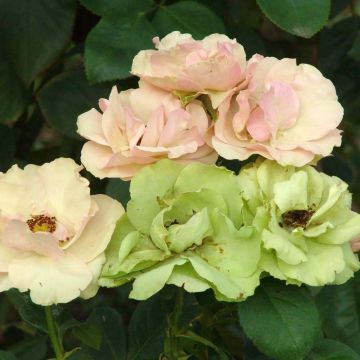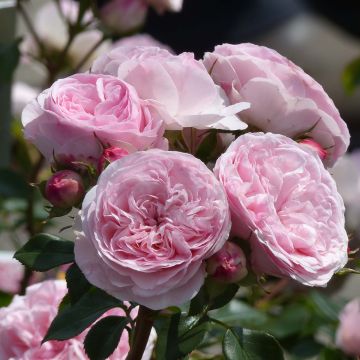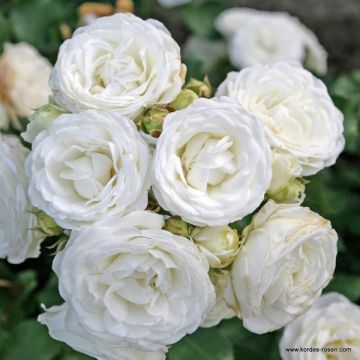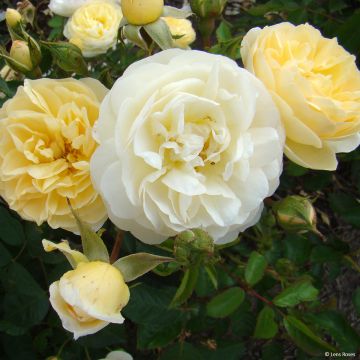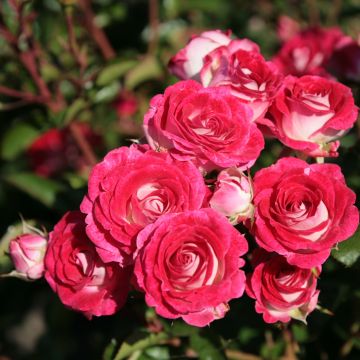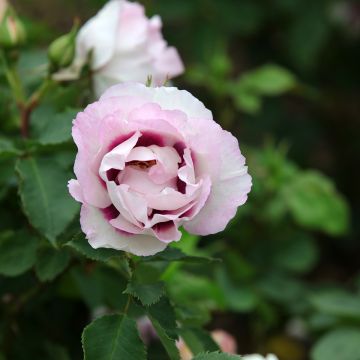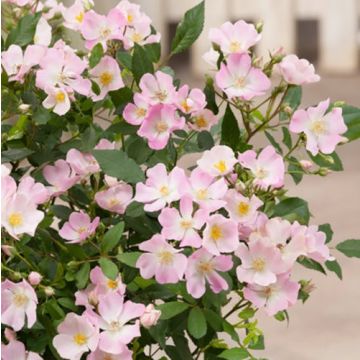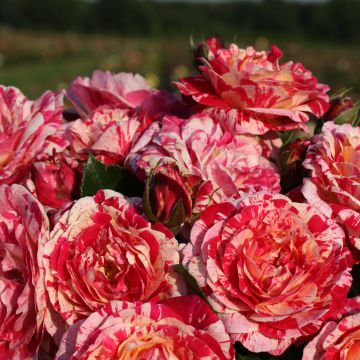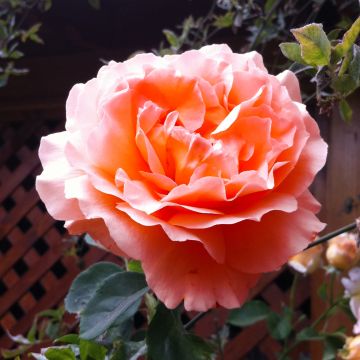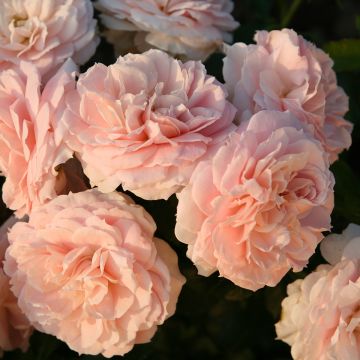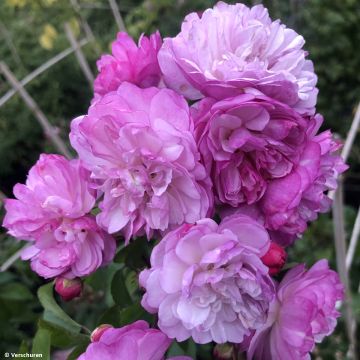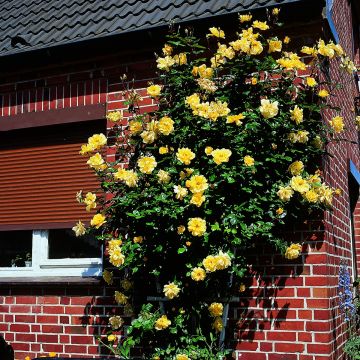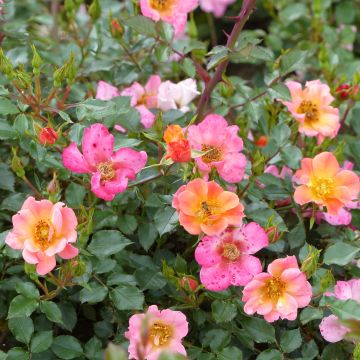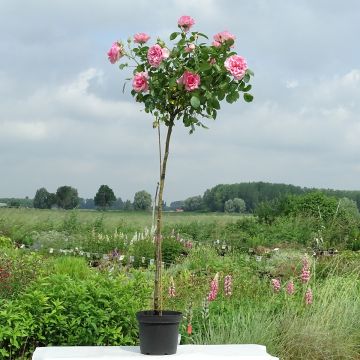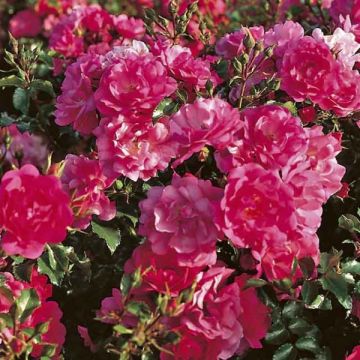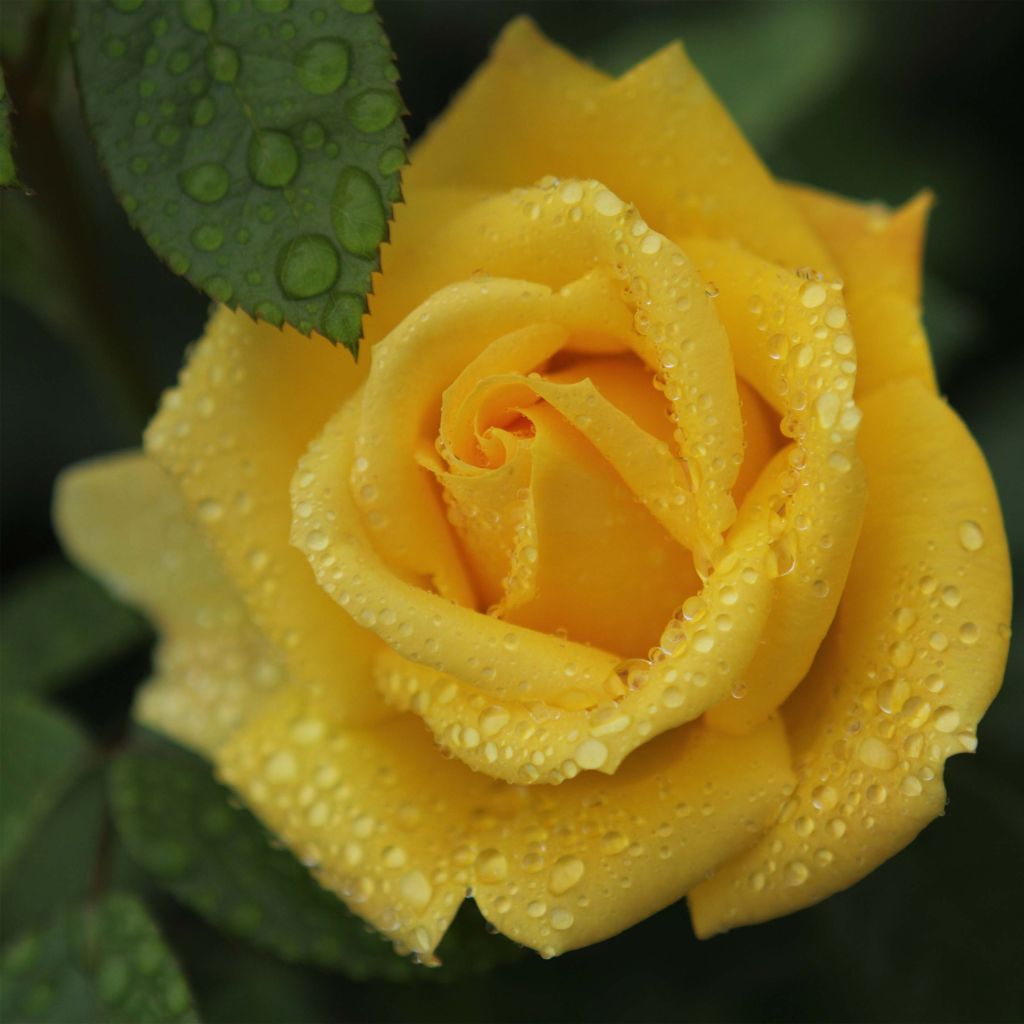

Rosa x floribunda Arthur Bell
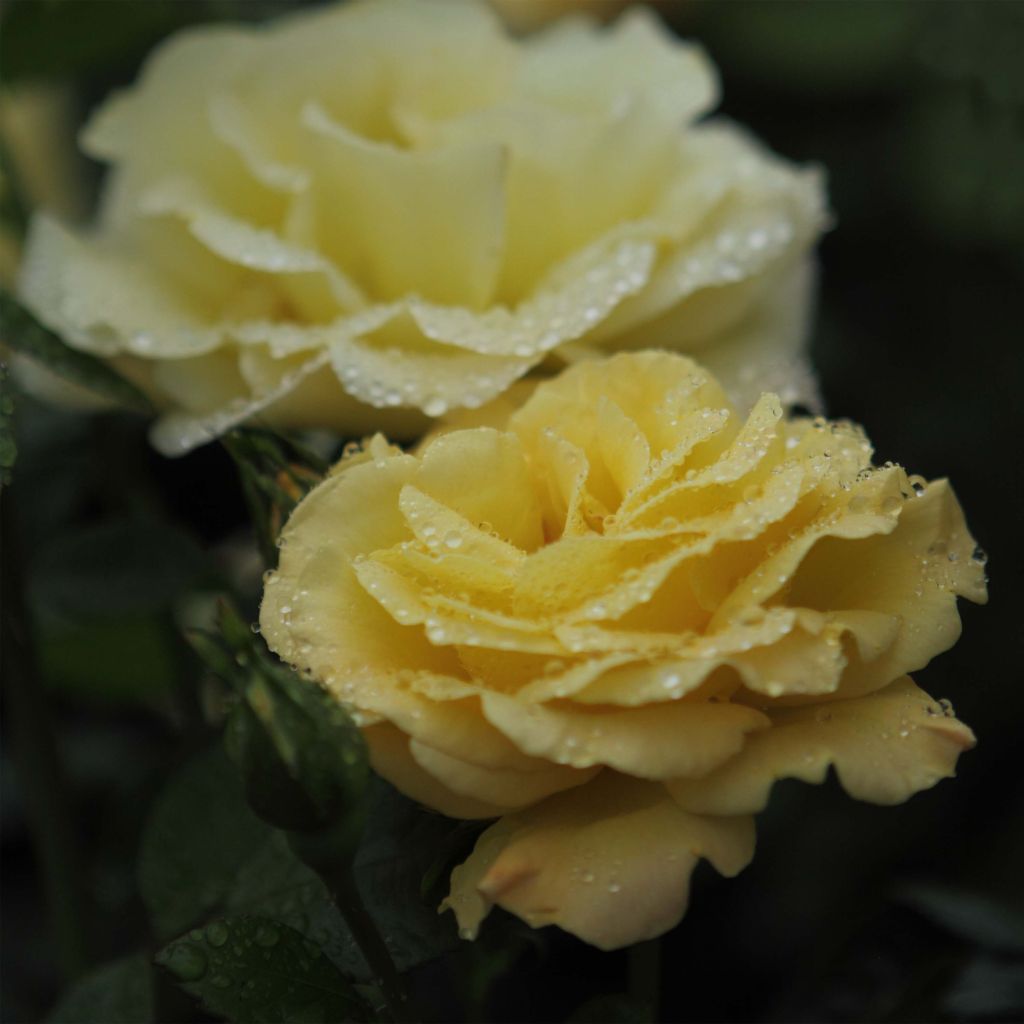

Rosa x floribunda Arthur Bell
Rosa x floribunda Arthur Bell
Rosa x floribunda Arthur Bell
Rose 'Arthur Bell'
This item cannot be shipped to the selected country
Delivery charge from €5.90
Delivery charge from €5.90
Delivery to Corse prohibited
More information
Schedule delivery date,
and select date in basket
This plant carries a 24 months recovery warranty
More information
We guarantee the quality of our plants for a full growing cycle, and will replace at our expense any plant that fails to recover under normal climatic and planting conditions.
From €5.90 for pickup delivery and €6.90 for home delivery
Express home delivery from €8.90.
From €5.90 for pickup delivery and €6.90 for home delivery
Express home delivery from €8.90.
Delivery to Corse prohibited: UE law prohibits the import of this plant from mainland France to Corse as part of the fight against Xylella fastidiosa. Please accept our sincere apologies.
More information
Does this plant fit my garden?
Set up your Plantfit profile →
Description
Rosa 'Arthur Bell' is a vigorous bush that will be appreciated for the generosity and brightness of its flowering. This variety produces large bouquets of double roses that range from bright golden yellow to pale-yellow and cream, creating charming shades of yellow throughout the plant. These large roses are also pleasantly scented. The bush is vigorous and resistant to diseases. It blooms continuously throughout summer. It looks stunning in flower beds and also provides beautiful flowers for bouquets.
Rosa 'Arthur Bell' is a modern hybrid belonging to the Floribunda Rose group. It is a bushy variety similar to English roses, with a repeat flowering habit, producing large flowers grouped in small clusters. The bush has an upright habit. It quickly reaches a height of 1m (3ft) and a width of 80cm (32in). The roses measure approximately 10cm (4in) wide. They are cup-shaped, slightly turbinate, and composed of more than 40 yellow petals. When fully open, they flatten to reveal a golden stamen centre. Each flower emerges from a pointed bud lightly variegated with orange. The intense and sweet fragrance is more noticeable in warm weather. The foliage is divided into dark green glossy leaflets, and it is disease-resistant under good growing conditions. The plant loses its leaves in winter.
This radiant bush is perfect for flower beds, planted in groups of 3. It pairs well with many perennials or annuals with light flowering, such as panicled baby's breath, tall phlox, perennial geraniums, love-in-a-mist, or catmints. Create a beautiful ensemble by combining it with a white or orange bush rose. It tolerates competition from the roots of other plants, making it ideal for a bed of moderate-sized flowering shrubs (deutzias, abelias). Also consider pairing it with small-sized clematis, with violet, blue, or white flowers.
Report an error about the product description
Rosa x floribunda Arthur Bell in pictures


Plant habit
Flowering
Foliage
Botanical data
Rosa
x floribunda
Arthur Bell
Rosaceae
Rose 'Arthur Bell'
Cultivar or hybrid
Rosa canina Laxa (2L/3L pot)
Other Polyantha clustered Roses
Planting and care
Plant in a sunny or lightly shaded location. English-type roses are tolerant, but do not appreciate excessive limestone. They will adapt to any garden as long as the soil is well worked, not too heavy, and sufficiently rich. To plant your rose, work the soil by crumbling it and add fertiliser to the bottom of the planting hole (dried blood or dehydrated horn, for example). Water generously after planting to remove any air pockets. Water regularly for a few weeks to facilitate root growth.
Pruning English roses is essential for flowering. At the end of winter, shorten the branches to 3-5 eyes above the ground (at the lowest point), choosing an eye that faces outward for a more elegant habit. Remove dead wood and unsightly branches. Prune at an angle above an eye.
Regularly remove faded flowers to encourage new blooms.
Planting period
Intended location
Care
-
, onOrder confirmed
Reply from on Promesse de fleurs
Roses by purpose
Haven't found what you were looking for?
Hardiness is the lowest winter temperature a plant can endure without suffering serious damage or even dying. However, hardiness is affected by location (a sheltered area, such as a patio), protection (winter cover) and soil type (hardiness is improved by well-drained soil).

Photo Sharing Terms & Conditions
In order to encourage gardeners to interact and share their experiences, Promesse de fleurs offers various media enabling content to be uploaded onto its Site - in particular via the ‘Photo sharing’ module.
The User agrees to refrain from:
- Posting any content that is illegal, prejudicial, insulting, racist, inciteful to hatred, revisionist, contrary to public decency, that infringes on privacy or on the privacy rights of third parties, in particular the publicity rights of persons and goods, intellectual property rights, or the right to privacy.
- Submitting content on behalf of a third party;
- Impersonate the identity of a third party and/or publish any personal information about a third party;
In general, the User undertakes to refrain from any unethical behaviour.
All Content (in particular text, comments, files, images, photos, videos, creative works, etc.), which may be subject to property or intellectual property rights, image or other private rights, shall remain the property of the User, subject to the limited rights granted by the terms of the licence granted by Promesse de fleurs as stated below. Users are at liberty to publish or not to publish such Content on the Site, notably via the ‘Photo Sharing’ facility, and accept that this Content shall be made public and freely accessible, notably on the Internet.
Users further acknowledge, undertake to have ,and guarantee that they hold all necessary rights and permissions to publish such material on the Site, in particular with regard to the legislation in force pertaining to any privacy, property, intellectual property, image, or contractual rights, or rights of any other nature. By publishing such Content on the Site, Users acknowledge accepting full liability as publishers of the Content within the meaning of the law, and grant Promesse de fleurs, free of charge, an inclusive, worldwide licence for the said Content for the entire duration of its publication, including all reproduction, representation, up/downloading, displaying, performing, transmission, and storage rights.
Users also grant permission for their name to be linked to the Content and accept that this link may not always be made available.
By engaging in posting material, Users consent to their Content becoming automatically accessible on the Internet, in particular on other sites and/or blogs and/or web pages of the Promesse de fleurs site, including in particular social pages and the Promesse de fleurs catalogue.
Users may secure the removal of entrusted content free of charge by issuing a simple request via our contact form.
The flowering period indicated on our website applies to countries and regions located in USDA zone 8 (France, the United Kingdom, Ireland, the Netherlands, etc.)
It will vary according to where you live:
- In zones 9 to 10 (Italy, Spain, Greece, etc.), flowering will occur about 2 to 4 weeks earlier.
- In zones 6 to 7 (Germany, Poland, Slovenia, and lower mountainous regions), flowering will be delayed by 2 to 3 weeks.
- In zone 5 (Central Europe, Scandinavia), blooming will be delayed by 3 to 5 weeks.
In temperate climates, pruning of spring-flowering shrubs (forsythia, spireas, etc.) should be done just after flowering.
Pruning of summer-flowering shrubs (Indian Lilac, Perovskia, etc.) can be done in winter or spring.
In cold regions as well as with frost-sensitive plants, avoid pruning too early when severe frosts may still occur.
The planting period indicated on our website applies to countries and regions located in USDA zone 8 (France, United Kingdom, Ireland, Netherlands).
It will vary according to where you live:
- In Mediterranean zones (Marseille, Madrid, Milan, etc.), autumn and winter are the best planting periods.
- In continental zones (Strasbourg, Munich, Vienna, etc.), delay planting by 2 to 3 weeks in spring and bring it forward by 2 to 4 weeks in autumn.
- In mountainous regions (the Alps, Pyrenees, Carpathians, etc.), it is best to plant in late spring (May-June) or late summer (August-September).
The harvesting period indicated on our website applies to countries and regions in USDA zone 8 (France, England, Ireland, the Netherlands).
In colder areas (Scandinavia, Poland, Austria...) fruit and vegetable harvests are likely to be delayed by 3-4 weeks.
In warmer areas (Italy, Spain, Greece, etc.), harvesting will probably take place earlier, depending on weather conditions.
The sowing periods indicated on our website apply to countries and regions within USDA Zone 8 (France, UK, Ireland, Netherlands).
In colder areas (Scandinavia, Poland, Austria...), delay any outdoor sowing by 3-4 weeks, or sow under glass.
In warmer climes (Italy, Spain, Greece, etc.), bring outdoor sowing forward by a few weeks.


































